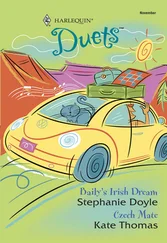18
I believe that Zhang Shu’s feeling that Xiao Xingxing was an old friend at first sight can be explained by Jung’s theory of the anima.
“Every man carries within him an eternal image of the feminine. It is not the form of a specific woman, but rather the clear and unambiguous image of the feminine. The image is unconscious and is the original hereditary key element engraved on the masculine organism. It is the imprint or archetype of the sum total of our ancestor’s experience with the feminine, the deposit bestowed by women. Since the image is unconscious, it is often projected onto the beloved and is one of the important factors behind sexual attraction and repulsion.
“Regardless of what reasons a man might have for loving a woman, they are all secondary, because the principal reason resides in his unconscious. A man will try again and again to join with a woman who conflicts with his anima, but will always find that it leads to antagonism and dissatisfaction.”
In this regard, Wang Xiyi, no doubt, is the sort of woman who conflicts with Zhang Shu’s anima.
If this explanation is too simple and absolute, then how best can it be explained?
According to Jung’s theory, Lin Daiyu represents Jia Baoyu’s anima, which explains why upon first seeing her he said, “I have seen this sister before.”
Therefore, the explanation for the legend of the Spiritual Jade and the Crimson Pearl Plant is not the karma of three lives, but rather the mutual attraction of fusing mental images. Most religious mysteries can be confirmed through modern scientific theory.
Originally, Zhang Shu had wanted to examine the painting with Xiao Xingxing. However, he had seen what he had no desire to see at the lighted window — a strange man applying a silver acupuncture needle to her abdomen. From where he stood he could see nothing else, but he could imagine her exposing her white abdomen to him. He was totally at a loss to explain how the two of them had so quickly become so close and arrived at a tacit understanding. He felt that the needle was not directed at her abdomen but rather at his heart, for he felt a sudden ache there.
Just before dawn, he finally opened the painting. Lakshmi was bathing in a lotus pond; beside her was a plump child. The painting was identical to the one in Dandan Temple in Hotan, Xinjiang, and the brushstrokes were a tad clearer as well. With the piling up of years, the painting had faded so that all that remained were ocher and mineral green hues. Despite having been carefully mounted, the painting appeared extremely fragile as if it would crumble by being touched. One of Lakshmi’s terrified and wretched eyes had been gouged out, leaving a terrifying black hole.
He stared in shock at that black hole for a long time.
1
Indian Tantric Buddhism refers to the Joyful Buddha as Ganapati. Ganapati means joyful, hence the name Joyful Buddha.
Joyful Buddhas come in two forms: individual and in couples, referred to as honored pairs. Nandavajra, Jinavajra, and Jichakravajra are usually in couples.
Single or in pairs, the joyful Buddhas are all naked, which symbolizes their separation from the mundane world. In their embrace, the male represents method, the female wisdom, and the accomplishment of both. Together, the male and female represent a complete individual. Through cultivation they arrive at “Happiness,” but happiness that symbolizes faith and not debauchery.
The Joyful Buddha, also known as Nandikesvara, or Nandavajra, is the Buddha of Wood in Tantric Buddhism, and depicted as a man and woman in naked embrace. According to the Buddhist sutras, the male is the eldest son of Mahesvara and is called the Spirit of Desolation, who takes delight in doing evil and harming the world. The female is a transformation of the bodhisattva Guanyin. In their embrace she receives his love and keeps him from doing evil, and for this reason is called Nandikesvara. In paintings, the two are depicted as standing in naked embrace, wearing hats and necklaces of skeletons. The male is fierce and robust, the female is tender and charming.
In the Four Vinayaka Dharmas a legend is recorded, according to which Guanyin, great pity burning in her heart, used the roots of her great compassion and transformed herself into Vinayaka and went to King Nanda’s residence. The king, upon seeing the woman, was inflamed with lust and embraced her. The woman refused him and said, “Although I am like a woman of passion, which hinders enlightenment, I have been concerned with the teachings of the Buddha and have attained a monastic’s robe. If you wish to touch me now in lust, can you follow my instructions and protect the Dharma in the future? Can you help me protect the practitioners and not obstruct them? Can you obey me and not do evil in the future? If you can follow my instructions, you can be my bosom friend.” “Hearing you speak now, I will follow you. Henceforth, I will do as you say and protect the Dharma.” Thus, when Vinayaka smiled and embraced him, he said, “Good, good. Your wish is my command. I will protect the Dharma and will not create obstructions.” From this it can be seen that the deva was the bodhisattva Guanyin.
There is yet another explanation: the Joyful Buddha is the six heavens of desire of Buddhism. According to Buddhist belief there are five methods of sexual intercourse in the realm of desire, such as a couple embracing to make love in the ordinary world. “The joy resulting from the kinds of the sexual desire of all sentient beings” is a view related to the ancient Indian worship of the procreative forces. The sect held that all things in the universe came from the replication of the procreative drive of the Genetrix. Therefore, they viewed sex as a way of serving the goddess and of worshiping her.
Master Tsong-ka-pa, in commenting on the unity of the Buddha and sexual union, said, “The enlightened mind is drops of dew poured down from five-color light of the rainbow. Replete with two sexual organs, human beings must visualize a vajra (penis) and a lotus (womb), and imagine a five-colored light filling them.”
The union of two beings is “as essential as the two wings of a bird and the two wheels on a cart.” It is said that through this practice a man and a woman can more quickly attain the Way and become Buddhas. In this way, the second-rate position of women in Buddhism can be rectified.
2
In her shabby old room, Xingxing painted with the simplest of supplies.
Due to Zhang Shu’s influence, Xiao Xingxing paid special attention to the frescoes of Lakshmi, and she did find several, which, though located in secondary places in the caves, were actually eye-catching.
Xiao Xingxing imagined that Lakshmi must have been a sharp woman. For one, she could wrap the intelligent Vaisravana around her little finger. Secondly, she was a central goddess in the pantheons of Hinduism, Brahmism, Buddhism, and Tibetan Tantrism.
Xingxing thus imagined Lakshmi’s childhood, youth, and young adulthood. She had to possess the qualities of an international female spy. She wasn’t exactly beautiful, nor was she particularly favored. She was born when the asuras were roiling the Sea of Milk and was referred to as the girl from the Sea of Milk. Naturally, she couldn’t compare with Venus, who rose to the surface of the sea on a shell. Even though she was born of common parents, she harbored a childish ambition, and her childhood was most certainly anything but common. For a girl to be successful, the first thing she had to do was destroy old notions of chastity, thought Xingxing. Average-looking Lakshmi had to be tricky to win Vaisravana. There are twenty protective deities in Buddhism, and Vaisravana is ranked number three, next to the famous Brahma and Indra, and could be considered the one who possessed real power among the army of protective deities. Lakshmi was ranked eleventh. Biancaitian, who was ranked just ahead of her, was superior to her in all ways, be it in terms of intelligence or skill in debate. Add to this her pleasant voice and lovely countenance, and Lakshmi would have a difficult time besting her. Moreover, it is likely that Gongdetian, as she was called, did not ascend to the throne of a Buddhist protective deity until after she married Vaisravana and was only called Lakshmi in her youth.
Читать дальше
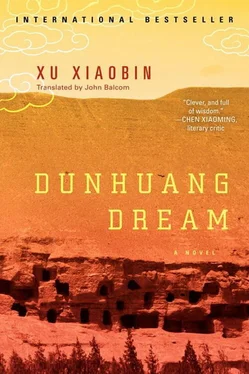


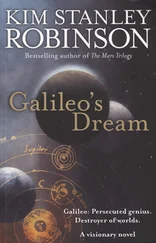
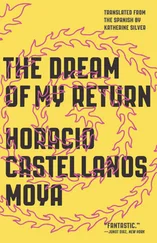

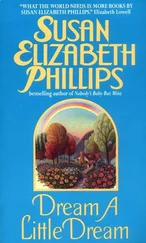
![Theresa Cheung - The Dream Dictionary from A to Z [Revised edition] - The Ultimate A–Z to Interpret the Secrets of Your Dreams](/books/692092/theresa-cheung-the-dream-dictionary-from-a-to-z-r-thumb.webp)
